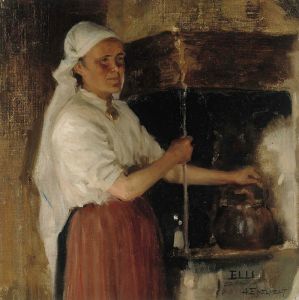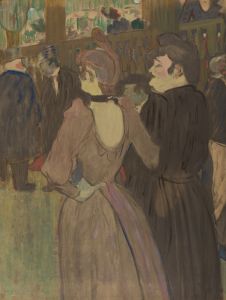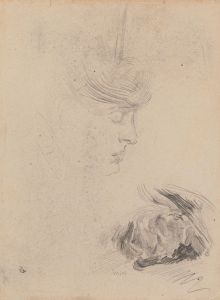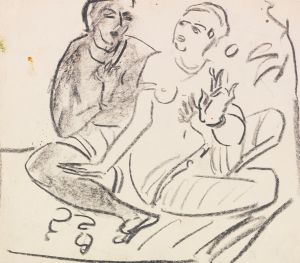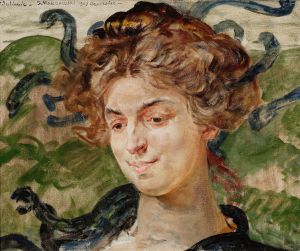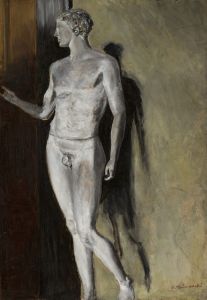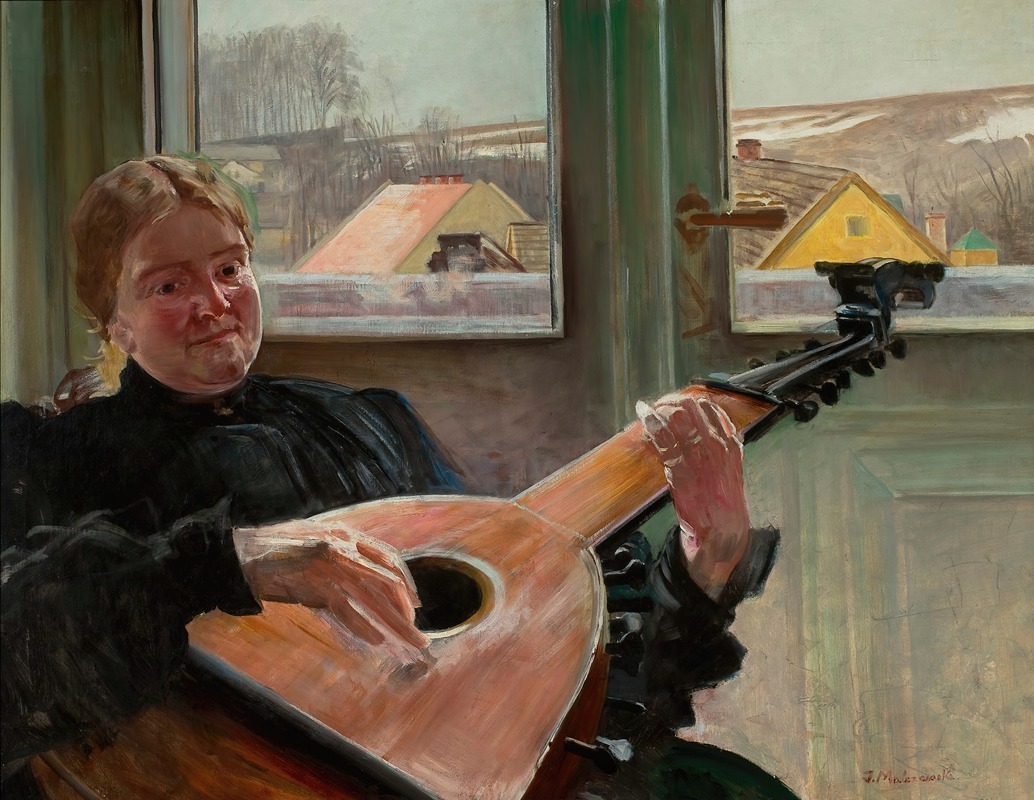
Portrait of artist’s sister Helena with a lute
A hand-painted replica of Jacek Malczewski’s masterpiece Portrait of artist’s sister Helena with a lute, meticulously crafted by professional artists to capture the true essence of the original. Each piece is created with museum-quality canvas and rare mineral pigments, carefully painted by experienced artists with delicate brushstrokes and rich, layered colors to perfectly recreate the texture of the original artwork. Unlike machine-printed reproductions, this hand-painted version brings the painting to life, infused with the artist’s emotions and skill in every stroke. Whether for personal collection or home decoration, it instantly elevates the artistic atmosphere of any space.
Jacek Malczewski, a prominent figure in Polish art, is renowned for his symbolic and often mystical paintings that reflect the cultural and political atmosphere of Poland in the late 19th and early 20th centuries. One of his notable works is "Portrait of the Artist’s Sister Helena with a Lute," which exemplifies his unique style and thematic interests.
Jacek Malczewski was born in 1854 in Radom, Poland, and became a leading artist of the Young Poland movement, which sought to express Polish national identity through art during a time when Poland was partitioned and lacked political sovereignty. Malczewski's works often incorporate elements of Polish folklore, mythology, and history, blending realism with symbolism to convey deeper meanings.
"Portrait of the Artist’s Sister Helena with a Lute" is a testament to Malczewski's skill in portraiture and his ability to infuse his subjects with symbolic significance. The painting features Helena Malczewska, the artist's sister, depicted with a lute, an instrument often associated with harmony and poetic expression. The choice of the lute as a prop in the portrait may suggest a connection to the arts and the cultural milieu of the time, highlighting the role of music and creativity in Polish society.
Malczewski's use of color and composition in this portrait is characteristic of his broader oeuvre. He often employed a rich palette and meticulous attention to detail, which can be seen in the delicate rendering of Helena's features and the textures of her clothing. The background of the painting, while not overly detailed, provides a subtle context that complements the central figure, allowing the viewer to focus on the expression and demeanor of Helena.
The portrait not only captures the likeness of Helena but also conveys a sense of introspection and contemplation, a common theme in Malczewski's work. His portraits frequently explore the inner lives of his subjects, inviting viewers to ponder their thoughts and emotions. This introspective quality is enhanced by the serene and somewhat enigmatic expression on Helena's face, as well as the gentle positioning of her hands on the lute.
Jacek Malczewski's contribution to Polish art is significant, as he played a crucial role in the development of modern Polish painting. His works are celebrated for their ability to merge personal and national narratives, reflecting the complexities of Polish identity during a turbulent historical period. "Portrait of the Artist’s Sister Helena with a Lute" is a fine example of how Malczewski's art transcends mere representation, offering a window into the cultural and emotional landscape of his time.
Today, Malczewski's paintings are held in high regard and can be found in major museums and collections, both in Poland and internationally. His legacy continues to influence contemporary artists and art historians who study the intersection of art, culture, and national identity. "Portrait of the Artist’s Sister Helena with a Lute" remains a cherished piece within his body of work, appreciated for its artistic merit and its reflection of the artist's personal and cultural milieu.






